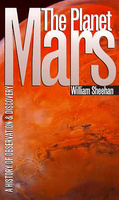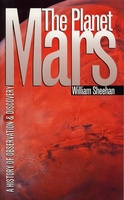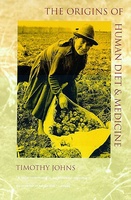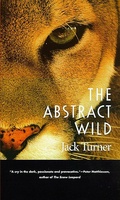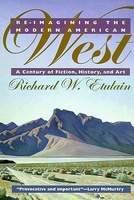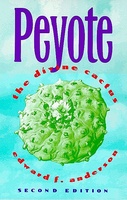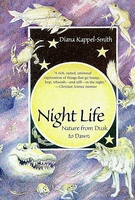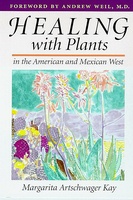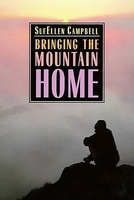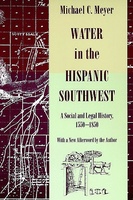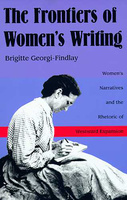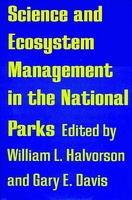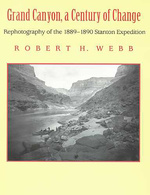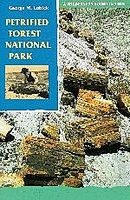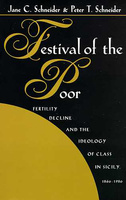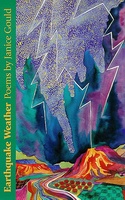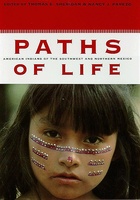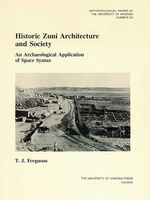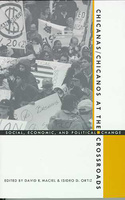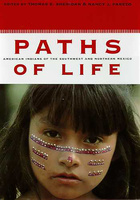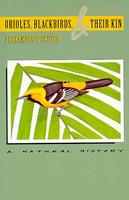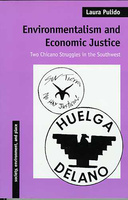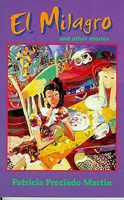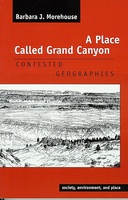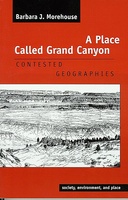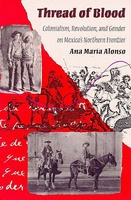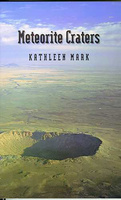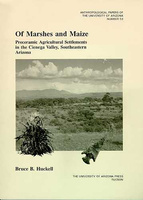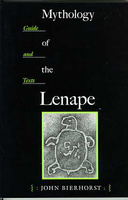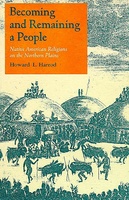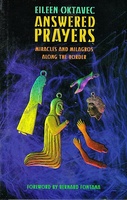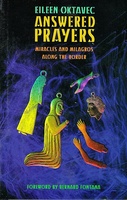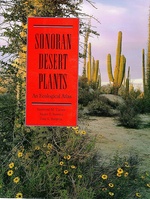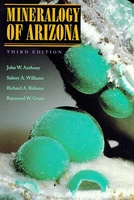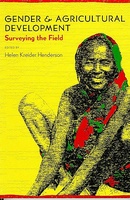The University of Arizona Press is the premier publisher of academic, regional, and literary works in the state of Arizona. They disseminate ideas and knowledge of lasting value that enrich understanding, inspire curiosity, and enlighten readers. They advance the University of Arizona’s mission by connecting scholarship and creative expression to readers worldwide.
An Introduction to Tree-Ring Dating
The Planet Mars
Twenty years after the Viking missions of the '70s, we are finally going back to Mars. No fewer than ten missions are planned for the period between 1996 and 2003, and it is likely that human explorers will follow soon after--perhaps by the middle of the twenty-first century. When they do, they will owe much to the Mars of romance, to ...
Re-imagining the Modern American West
A Century of Fiction, History, and Art
Danger Zones
Homosexuality, National Identity, and Mexican Culture
Bringing the Mountain Home
"We like to think that in the wilderness we escape streets and signs. We venture beyond familiar places where everything has been named, made human, possessed, where all paths are known, mapped, set in concrete or ink.. A wilderness is roadless, both by agreement and by law. Surely this should also mean trailless, signless, mapless, nameless: no trace of human writing on the land, nothing to say that we have inscribed this place as ours. An absence that signals the purity of the land, an absence at the center of our desire.
Maybe we should go to the wilderness to get lost, to lose the familiar way of cities and towns, to let loose of our everyday sense of our place, and find another way of being in the world. Lost, amazed, I might forget myself and find myself, a creature among other creatures, a reed in the wind, fed by sunlight, dead plants and animals, minerals from the mountains crumbling at my feet." --SueEllen Campbell, from Bringing the Mountain Home A deeply loved landscape holds us fast to the planet, says SueEllen Campbell in this engaging exploration of our relationships with wild places.
What lies at the core of such love? What draws us to a windblown mountaintop, the slickrock desert, the crash and roar of a whitewater river? What desires shape our wilderness journeys--backpacking, rafting, hiking--and what events, emotions, and ideas shape the stories we tell about them? Campbell explores these questions through personal narratives that float between memoir and meditation, nature essay and adventure story. She travels to a remote spot in Kenya, where thousands of flamingos "encircle the geysers and carpet the glassy lake. In the rain forests of Dominica, she marvels at parrots as bits of green forest tipped with scarlet and given wing.
But always she returns to the intimate landscapes of her home in the Rocky Mountain and desert West. There, a trudge into the Grand Canyon becomes a pilgrimage into the earth's immensity. Layers of personal grubbiness offer an introduction to geology, and a comical obsession with equipment hints at how to live in the moment. A climb up a familiar mountain turns into a brush with death.
By turns celebratory, funny, lyrical, and down-to-earth, Campbell's is an exuberant new voice that will appeal to many readers. Lovers of the outdoors, armchair travelers, and students of nature writing will find in this book a field guide to the emotions and ideas set loose in us by wild places.
Water in the Hispanic Southwest
A Social and Legal History, 1550-1850
The Southwest in the American Imagination
The Writings of Sylvester Baxter, 1881-1889
The Frontiers of Women's Writing
Women's Narratives and the Rhetoric of Westward Expansion
Science and Ecosystem Management in the National Parks
Grand Canyon, A Century of Change
Rephotography of the 1889-1890 Stanton Expedition
Festival of the Poor
Fertility Decline and the Ideology of Class
Paths of Life
Within these pages are living portraits of fifteen Native American groups of Arizona and northern Mexico. The Navajos, the Western Apaches, the Hualapais, Yavapais, and Havasupais, the Yaquis, the O'odham, the Tarahumaras, the Southern Paiutes, the Seris, the Colorado River Yumans--Quechan, Mohaves, Cocopas, and Maricopas--and the Hopis. Literally and figuratively, the paths they walk are the same paths walked by their ancestors, going back hundreds and even thousands of years.
Through history, most of these groups have seen their homelands conquered by outside military forces and their people scattered far and wide. Yet, despite years of exile and subjugation, they have all kept alive their cultures, their sense of being a people. This book explores the symbols, rituals, and words that have ensured continuity and that distinguish each group from others. Equally important, Paths of Life describes the dynamic changes that are occurring in each group as new ideas are incorporated into traditional ways of life.
The book focuses on one major cultural theme for each group. The chapter on the Navajos, for example, illustrates how the work of sheepherding reinforces the Diné way of relating to one another and living off the land, while the chapter on the Yaquis examines how Catholic and Native rituals have become fused into a uniquely meaningful Yaqui religion. Throughout the book, the guidance and advice of respected Indian scholars have ensured both accuracy and authenticity.
The pages in this volume are filled with individuals like Victoriano Churro, "a man who ran like a deer," and artist Grace Mitchell: "I'm going to weave a basket. I'll gather mulberry shoots, split them and roll them . . . " There are glimpses of the Yaqui flower world, "Wilderness world / flower freely, is blowing, / wilderness world," and the Seri creation myth, "Slender whirlwinds coming from the sky touch the land. / Sounds of arrows / striking the ground, / roaring, / raising dust clouds." Here also are Father Sun and Mother Moon, Rock Crystal Boy and Yellow Corn Girl, Spider Woman, Wolf, and of course Coyote.
Among the many books written about these groups, Paths of Life is rare for its breadth of information. The book includes dozens of photographs, both color and black-and-white, as well as a number of short asides, which discuss special points of interest. Readers in search of even more information will appreciate a carefully selected list of suggested additional reading. Encompassing anthropology, history, Native American cultures, arts, and folklore, at heart this is a book for anyone--teacher, student, armchair traveler, general reader--whose imagination has been captured by the lands and peoples of the Greater Southwest.
Historic Zuni Architecture and Society
An Archaeological Application of Space Syntax
Chicanas/Chicanos at the Crossroads
Social, Economic, and Political Change
Paths of Life
American Indians of the Southwest and Northern Mexico
Orioles, Blackbirds, and Their Kin
A Natural History
Environmentalism and Economic Justice
Two Chicano Struggles in the Southwest
A Place Called Grand Canyon
For most people, "Grand Canyon" signifies that place of scenic wonder identified with Grand Canyon National Park. Beyond the boundaries of the park, however, extends the greater Grand Canyon, a region that includes five Indian reservations, numerous human settlements, and lands managed by three federal agencies and by the states of ...
A Place Called Grand Canyon
For most people, "Grand Canyon" signifies that place of scenic wonder identified with Grand Canyon National Park. Beyond the boundaries of the park, however, extends the greater Grand Canyon, a region that includes five Indian reservations, numerous human settlements, and lands managed by three federal agencies and by the states of Arizona and Utah. Many people have sought to etch their values, economic practices, and physical presence on this vast expanse. Ultimately, all have had to come to terms with the limits imposed by the physical environment and the constraints posed by others seeking to carve out a place for themselves.
A Place Called Grand Canyon is an unprecedented survey of how the lands and resources of the greater Grand Canyon have come to be divided in many different ways and for many different reasons. It chronicles the ebb and flow of power --changes in who controls the land and gives it meaning. The book begins with an exploration of the geographies of the native peoples, then examines how the westward expansion of the United States affected their lives and lands. It traces the century of contest and negotiation over the land and its resources that began in the 1880s and concludes with an assessment of contemporary efforts to redefine the region. Along the way, it explores how the spaces of the greater Grand Canyon area came to be defined and used, and how those spaces in turn influenced later contests among the ranchers, loggers, miners, recreationists, preservationists, Native Americans, and others claiming a piece--or all--of the area for their own ends. The story exposes how dynamic the geographical boundaries of the region really are, regardless of the indelibility of the ink with which they were drawn.
With visitation to Grand Canyon National Park approaching five million people per year, pressures on resources are intensifying. When the greater Grand Canyon area is considered, environmental management is further complicated by the often-conflicting demands of business, recreation, ecological preservation, and human settlement. Morehouse invites us to look beyond boundaries drawn on maps to discover what Grand Canyon means to different people, and to think more deeply about what living in harmony with the land really entails. Her insights will be of interest to geographers and other social scientists--including anthropologists and environmental historians--and to all who seek a counterpoint to conventional natural histories of the region.
Thread of Blood
Colonialism, Revolution, and Gender on Mexico's Northern Frontier
Of Marshes and Maize
Preceramic Agricultural Settlement in the Cienega Valley, Southeastern Arizona
Becoming and Remaining a People
Native American Religions on the Northern Plains
Answered Prayers
When Catholics in the Southwest ask God or a saint for help, many of them do not merely pray. They also promise or present a gifta tiny metal object known as a milagro. A milagro, which means "miracle" in Spanish, depicts the object for which a miracle is sought, such as a crippled leg or a new house. Milagros are offered for ...
The Metropolitan Frontier
Cities in the Modern American West
Sonoran Desert Plants
The Sonoran Desert, a fragile ecosystem, is under ever-increasing pressure from a burgeoning human population. This ecological atlas of the region's plants, a greatly enlarged and full revised version of the original 1972 atlas, will be an invaluable resource for plant ecologists, botanists, geographers, and other scientists, and for all with a serious interest in living with and protecting a unique natural southwestern heritage.
An encyclopedia as well as an atlas, this monumental work describes the taxonomy, geographic distribution, and ecology of 339 plants, most of them common and characteristic trees, shrubs, or succulants. Also included is valuable information on natural history and ethnobotanical, commercial, and horticultural uses of these plants. The entry for each species includes a range map, an elevational profile, and a narrative account. The authors also include an extensive bibliography, referring the reader to the latest research and numerous references of historical importance, with a glossary to aid the general reader.
Sonoran Desert Plants is a monumental work, unlikely to be superseded in the next generation. As the region continues to attract more people, there will be an increasingly urgent need for basic knowledge of plant species as a guide for creative and sustainable habitation of the area. This book will stand as a landmark resource for many years to come.



